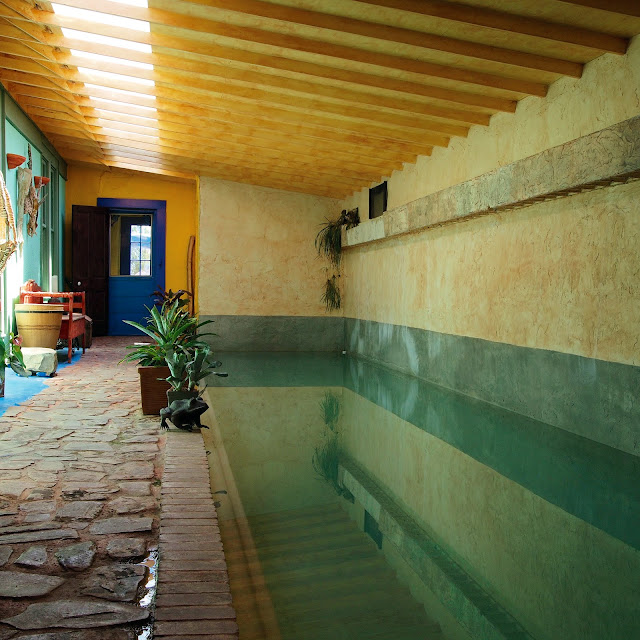If you look back over this blog for the past three months you find that I love shooting with the Olympus EP2 very much. It's a very fluid camera to shoot with. The EVF is great. The image quality is great. Even the industrial design makes me happy.
So there really wasn't any reason to go out and buy an EPL
So, when Precision Camera got a new supply in I went by to play with one. The camera is obviously the result of two previous learning curve. Buttons are bigger and clearer. The shutter button has a better feel. The mode dial, while not as spiffy of a design, sits right on top of the camera and is clear and easy to read. The flash is utilitarian and surprisingly well designed. If I hold the erected flash back with one finger I can bounce it straight off the ceiling. The camera looks.......utilitarian. It just doesn't draw the eye the way the Japanese Sixties Minimalist design ethos of the EP2 does. It's a black brick that works. And that endears me to it. It feels like a working tool
Three warnings so no one will come back and bitch: 1. The mounting flange on the back of the lens is made of a composite (nice word for tough plastic). I don't think it makes any difference in quality on the file but it's.......plastic. There. I said it. 2. The rear screen is a bit smaller than the one on the EP2. I use the big screen only for menu items so it doesn't bother me. I use the EVF for everything else. The one plus this might have is that it takes less battery power to light up a smaller screen. 3. There is not a separate wheel to adjust shutter speeds or apertures independantly. You have to use the "left/right, up/down" keys on the back to change the settings. Sounds gruesome but in reality I mostly use the "A" mode so all I want to change is the aperture or the "+/-" compensation. And the lack of a back mounted wheel means fewer accidental changes.
While I haven't had time to test it out myself, early adopters have mentioned that the anti-aliasing filter over the sensor is less aggressive which means that the images right out of the camera should have much better fine detail or should look sharper with less post production. Sharper images are always welcome.
Some other features that we can't dismiss too quickly: The flash can be set to full, 1/4, 1/16 and 1/64th power so you could actually use the in body flash as an optical trigger for your studio flashes. It can be also be used to control Olympus "R" flashes wirelessly. This means you don't have to choose between using your EVF and triggering your lights!!!! Course they could have made it really simple and put a sync socket somewhere on the camera body. They will probably save that for inclusion onto the new professional mFT body they'll announce in the Fall. Oooops! Did I just say that out loud?
The cost. This cameras, which also doubles as a great HD video camera, cost me the princely sum of $599. With a very good zoom lens. That it outperforms my $5000 from only three and a half years ago is astounding. If you are practiced and careful with your technique you should be able to get absolutely professional results with this piece of gear. At that price, if you are confronted with a shoot that presents a hazardous environment for gear but comes with a good budget, you could easily consider this little system expendable.
I have a fantasy of dumping everything else and doing business with a couple Pen cameras, some adapters and some other lenses. The business is changing so quickly. Content is moving inexorably to the web and to electronic tablets. I feel like putting to the test the old saw, "It's not the tool, it's the photographer behind it."
By way of full disclosure: I went into the local store and bought this camera with my own money. No one offered me any money or equipment to coerce me to like this camera or to say nice things about it. All the stuff written on this blog is here because I like photography and I like to write about it. It would be nice if you clicked on some of the product links but you sure don't have to. I'll disclose that as well. All those annoying links have returned something like $100 this year. Not getting rich writing fun content. But it's nice to know that you stopped by and took a look.
All the best, Kirk






